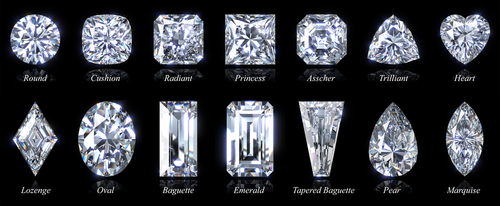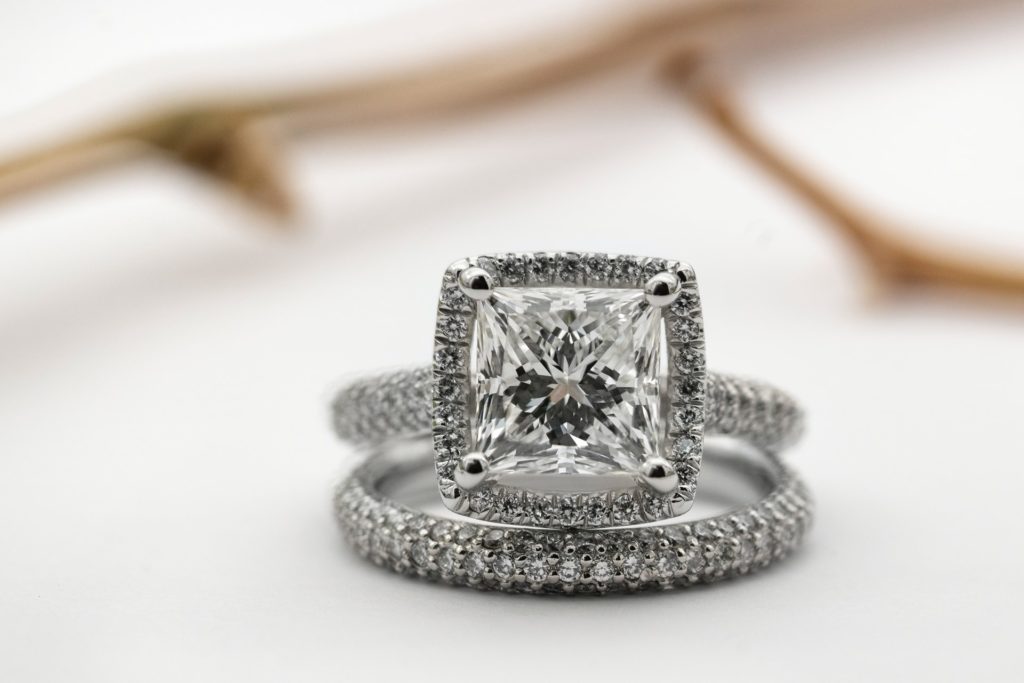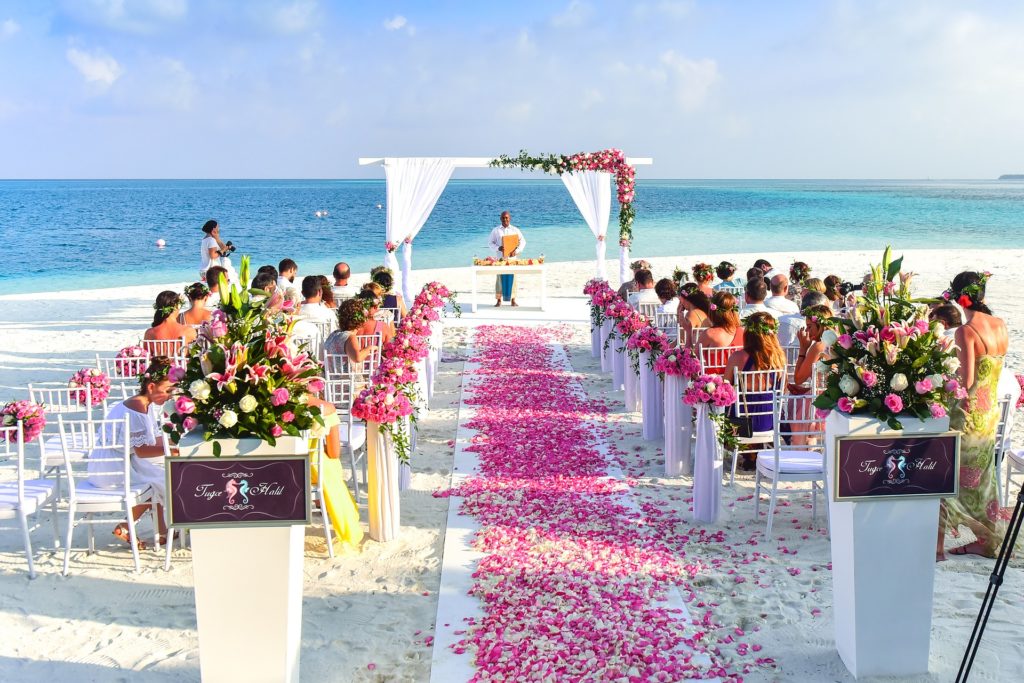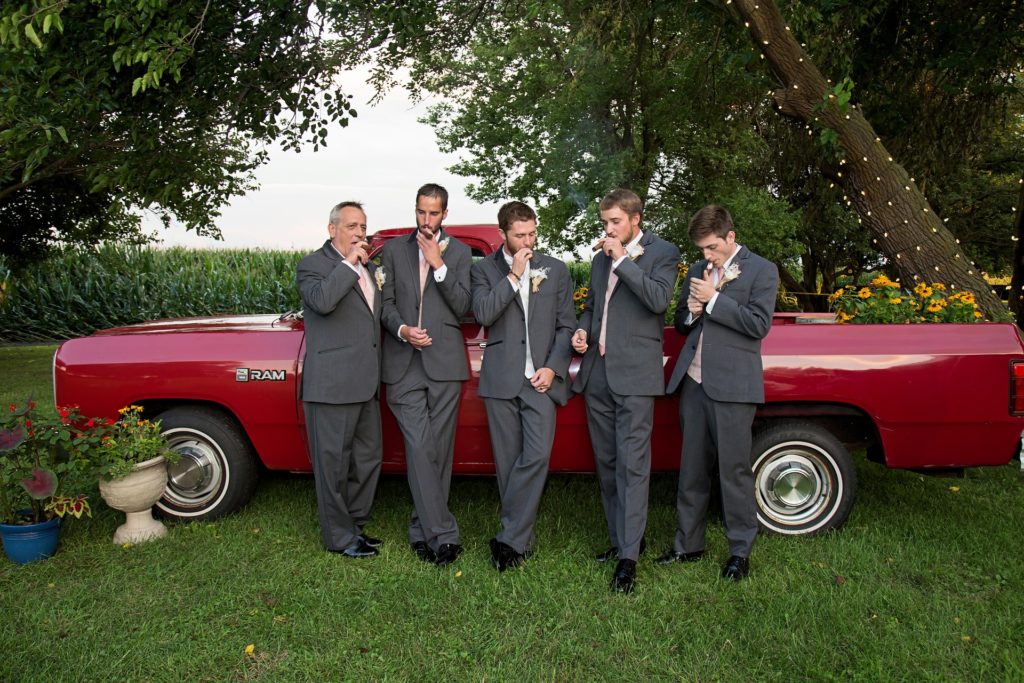“My most brilliant achievement was my ability to be able to persuade my wife to marry me.”
Winston Churchill
Once you have decided to take the plunge and propose, the first formality towards securing your bride to be’s hand in marriage will be to acquire a ring for the job.
By acquire, we don’t encourage you to pull off your own Hatton Garden robbery (the last one didn’t work out that well), but instead to choose the perfect engagement ring that will be a great fit for your future beau in a style and shape he/she’ll enjoy, and at a price that won’t break the bank.
If you’re lucky there may be a family heirloom you/she has lined up for the job. If so, the chances are you’ve probably spoken about this and your first steps will be to work out if any adjustments need to be made to the size of the band, settings of the stone and so forth.
If not, then you are now in the market for an engagement ring and it is down to you to choose and buy the perfect engagement ring for your bride to be. And if you are anything like most men, your knowledge regarding materials, ‘cuts’ of diamonds and what you are likely to get for your money will be sketchy at best.
Don’t let that worry you, as we’re here to help with the following guide.
Budget
First things first, what is your budget? It’s best to determine this before you go haring off like a bull in and china shop or make outlandish claims of buying a 2-carat diamond for the good lady.
Some sources suggest three months wages, some suggest one. We would advise you not to break yourself financially and buy the best ring that you can afford, without throwing yourself into debt.
The ring should be a symbol of your love and it’s the thought that counts. However, bear in mind if you do the deed with a £500 ring under the guise that it’s the best you can afford, and then turn up shortly after with a brand new £5k motorcycle, car or other significant boy toy – get ready for the proverbial to hit the fan.
She is likely to be unimpressed and this will be used against you until your dying day.
A months gross wages seem like a good place to start and tweak up or down as you see best.
Style
What style of ring would your wife to be like? You want to pick a ring that fits her preferences and gets the engagement off to a winning start!
This is the time to go secret agent on the good lady and cast your mind back to any conversations you may have had where she mentioned cut or styles she did or didn’t like. Have any of her friends recently got engaged and what did she say about their rings?
Look at her current jewellery – is it chunky or traditional, does she wear lots of white or yellow gold? Does she like simple, understated designs or is she a big bling kind of girl that wants the sparkliest number in the room?
If big and bold, you will want to get the largest diamond you can afford. Alternatively, if her style is more understated or earthy, you may look to go for a more traditional sleek design or something completely different like an ‘ecoring’ styled from wood.
Is there a particular stone such as an emerald, ruby or birthstone she has mentioned previously? If so, you may want to look for a ring that incorporates these or if going off piste, have one of these stones instead of the traditional diamond for a different look altogether (carefully consider first if she’ll be okay with this and not just to save you a few pennies!)
In the lead up, it may be worth taking a subtle trip to a jeweller and gaging her response to different rings as you eye up the gents watches. Take a minute away from drooling over the Breitlings and Omegas and prime her with a couple of comments such as ‘that’s a nice one’. Make note of her feedback and move on. Putting in the hard yards now will reap dividends later on.
Band size
Again, you may have to inject a bit of subterfuge into this one. Either have a look at one of her existing rings (or ask her friend or mum to) and take this to a jeweller to be sized or ask her ring size to buy her a test ring as a birthday or Christmas present. With a wide selection of rings that won’t break the bank, the online retailer Argento can be a great option for this with lots of reasonably priced rings from brands such as Pandora, Lilly and Rose and more.
When purchasing the engagement ring, one of the questions you should ask is if they will resize this for free if it doesn’t fit properly. This should however be considered as a last resort to save yourself any embarrassment of the ring being too loose – or too tight –on the day of the proposal.
Material
There are a variety of metals to choose from for the wedding band including rose gold, white gold, silver, platinum and palladium (and metals made up of a combination of these). Each has their own advantages and disadvantages and they will also vary in cost (which could mean compromises elsewhere.)
Platinum for example is the purest and most durable of these and is also the most expensive. Yellow gold in contrast is up to 75% pure gold and is much softer which, after many years of wear may need to be re-plated.
For a girl who loves a bit of pink, rose gold is also a very popular choice.
Yellow gold is very traditional but may be perceived to be old fashioned by some (most of our mum’s will probably have a yellow gold ring), whilst white gold and platinum are both very popular at present with their crisp silver look.
These both sit beautifully with a diamond ring and offer excellent choices at slightly different price points (a platinum band may cost up to twice as much as white gold.)
Unless you have very deep pockets, you may have to weigh up what the good lady would prefer – a larger diamond and slightly cheaper band i.e. white gold, or a better quality band such as platinum with a slightly smaller or poorer quality diamond. Your third choice is palladium which sits somewhere between the two. Find out how they compare using this precious metals guide.
That gentleman, we will leave upto you.
Shape
There are 14 main shapes of diamond which are:
- Round
- Cushion
- Radiant
- Princess
- Asscher
- Trilliant
- Heart
- Lozenge
- Oval
- Baguette
- Emerald
- Tapered baguette
- Pear
- Marquise
See examples of them here:

5 c’s of buying a diamond ring
Will a larger diamond be more expensive than a smaller one? Most likely yes. However, diamond prices are complicated and there are several other factors that will help to determine their value.
The main ones are often referred to by those in the know as the 5 C’s.
The five rules that will help to determine the value of a diamond are the Cut, Colour, Clarity, Carat and Certification.
Without further ado, here’s a breakdown of what you need to know before you open your wallet naively to the local jewellers:
Cut
Starting life as a rough diamond with an uneven shape, it takes a significant amount of work – all done by hand– to turn the ring into the sparkling end product. Whilst all the other factors are an act of nature, this is the only one that has human input and is arguably the most important.
Often confused with the shape (i.e. marquise, princess etc), the cutting of the diamond unlocks its potential, creating the beautiful sparkly diamond your lady yearns for. A well-cut diamond will demonstrate its brightness and how much light is reflected in the flashes of light as the diamond moves.
Colour
Diamonds come in an array of colours, and this refers to how clear or coloured they are. Often the clearer diamonds are the most valuable. Starting at ‘D’ and running through to ‘Z’, the diamond colour grading system describes the quality; from being completely colourless through to having a yellow tone. A colourless diamond will allow more light through it with greater brilliance.
Clarity
The clarity of the diamond refers to the number, size and type of blemishes within it (hopefully none.) These are the ‘flaws’ present in the diamond, with nearly all diamonds on the market having some. The key is to find the diamond with fewer inclusions – these are the birthmarks and freckles of the diamond.
The fewer and smaller these are, the more rare and valuable the diamond will be. This is rated by the GIA clarity grading scale which all reputable jewellers should be able to talk you through.
Carat
Here’s the big one and probably the aspect that the man on the street (us) is likely to of heard of. Simply put, this refers to the weight and overall size of the diamond. There is 100 points in a carat, so a half carat diamond would be one with 50 points or more. Bear in mind, a smaller diamond may be more valuable than a larger diamond where it has superior cut, colour and clarity.
Certification
When buying a diamond, make sure you get the correct certification with it. Usually certified by an independent laboratory, this will confirm the quality of your new sparkler, identifying the above factors of cut, colour, clarity and carat. This is your diamonds passport and should be kept somewhere safe, possibly in the drawer with your 25 metre swimming badge.
So there’s a rundown on how to choose the perfect engagement ring. A little education, particularly in the case of large purchases can go a long way. Go forth to get the sparkler she deserves, next steps – the proposal.
Read our top tips on how to propose and get that ring on her finger, then start planning your best man for the big day.




